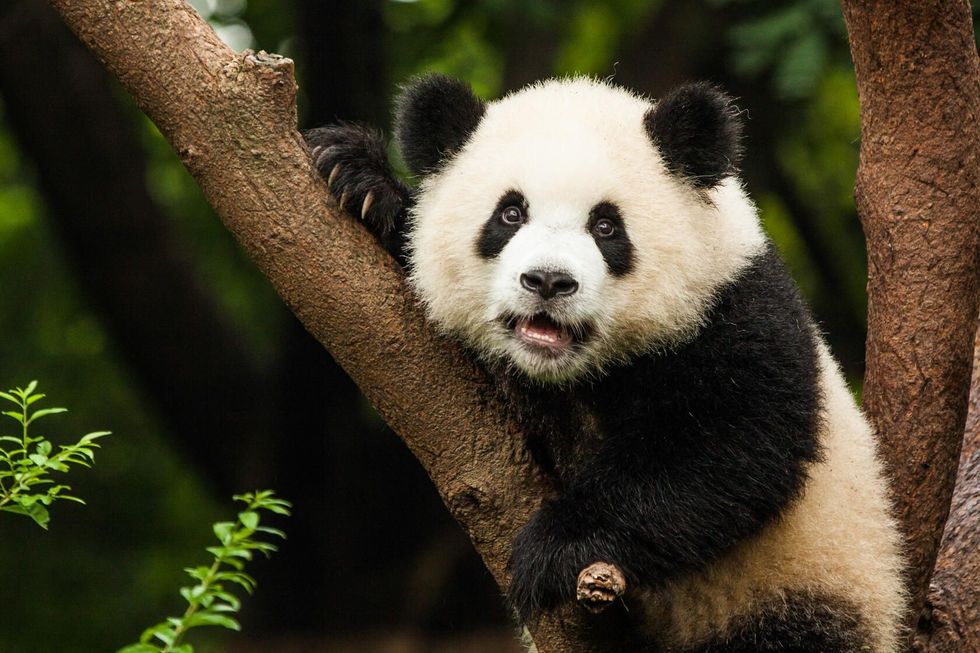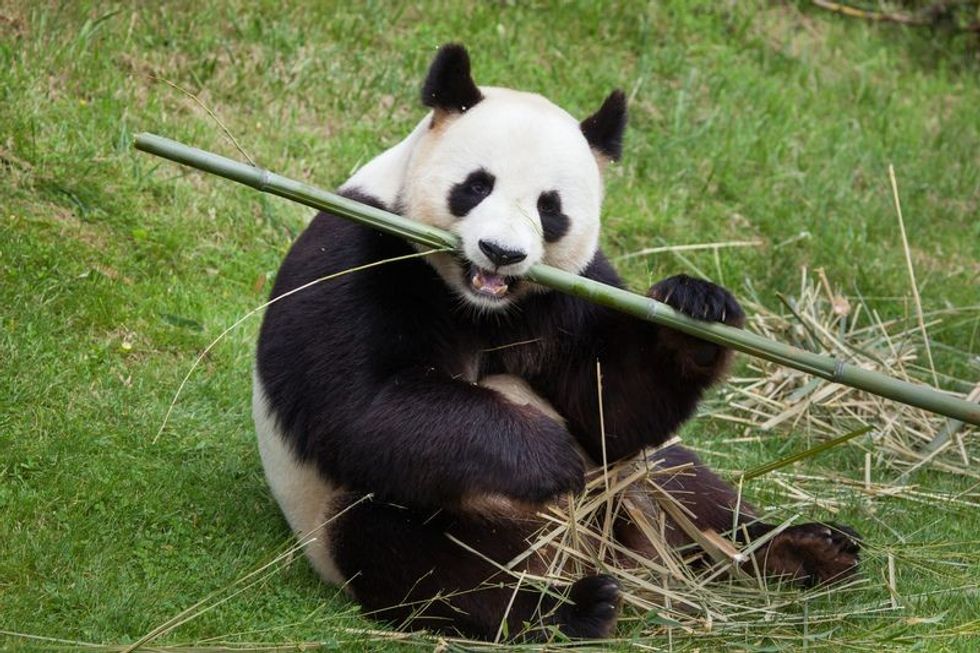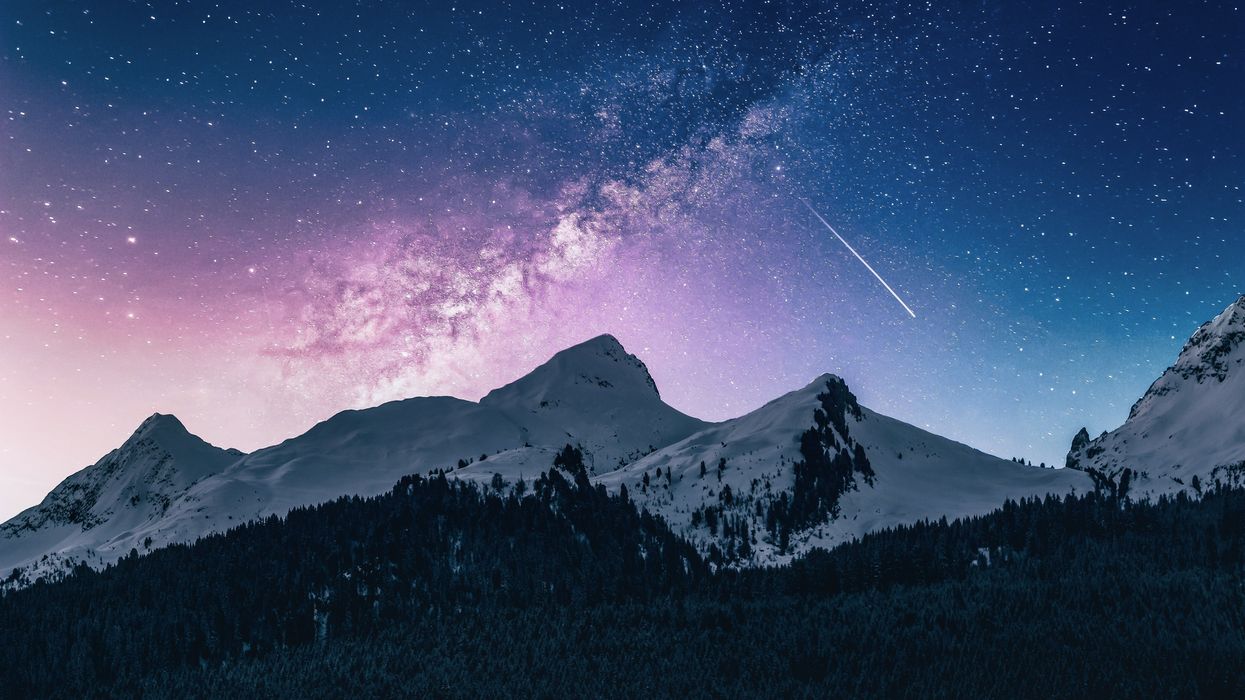A panda munching on bamboo shoots and leaves all day is a sight to behold, and when they're not eating or hunting for food, pandas sleep the majority of the time, but do pandas hibernate?
Giant pandas sleep for 2-4 hours between feeding in the wild, so instead of napping all night, a panda would eat and then take a long nap. Such naps last 2-4 hours and occur throughout the day, giving a panda a total of around 10 hours of sleep every day but do pandas hibernate?
The look of giant pandas is similar to that of a bear. They are one of the most well-known species on the planet due to their unique black and white coloring on their body.
Adult pandas spend most of their days in the mountains eating leaves from a bamboo tree, but the rest of their time is generally spent recuperating or sleeping. Giant pandas have a very low everyday energy expense, which may help them survive on a bamboo diet.
That explains pandas' sedentary behavior. Giant pandas sleep in their habitats in order to preserve energy. Because bamboo, which is deficient in nutrition, accounts for 99 percent of the diet of giant pandas, they must eat it every now and then.
From birth, Giant pandas do not have a preference for where they sleep. They sleep in trees, on rocks, and on the forest floor. The red pandas, on the other hand, do not do the same thing. They spend most of their lives in the trees.
They undertake everything in this habitat, including feeding, breeding, and sleeping. So, do pandas hibernate? Keep reading to know more about this tough animal.
Afterward, also read about panda life cycles and how much bamboo does a panda eat?
Do giant pandas hibernate?
No, giant pandas do not go into hibernation. During the winter, giant pandas don’t hibernate, and rather may travel or migrate short distances to lower altitudes.
Giant pandas can only be found in China and the nation recently declared giant pandas are no longer considered endangered. Giant pandas are just a biologically distinct species.
Tourists to the National Zoo may watch giant pandas at their most active on the coldest days. They are linked to bears and have a carnivore digestive system, yet they have adjusted to a plant-based diet. Pandas, unlike other bears, do not hibernate.
Giant Pandas, unlike most bears, do not retain fat in their body and so do not hibernate.
As a result of this less fat reserve, giant pandas are always on the lookout for food, hence they migrate. Pandas, unlike many similar temperate-climate bears, do not hibernate throughout the winter.
In China, they migrate and scratch out a living in the mountains’ forests, descending to roughly 5,000 ft (1524 m) in the winter to eat largely a diet of bamboo stalks and avoid the leaves, which provide less protein during the cold winter months.
Why do pandas not hibernate?
Pandas do not hibernate since they must keep consuming bamboo day in day out. Since a bamboo plant has limited nutritional content, they are unable to establish the giant panda’s fat reserves required for winter hibernation. This is how their food influences their ability to hibernate.
Bears and numerous other animal species go through this long-term slumber phase in the winter to survive the harsh temperatures, but pandas do not. And besides, winter must be difficult when there is limited food and excessively cold weather.
Pandas do not engage in any kind of hibernating procedure. It's not that they don't want to sleep; they simply can't do what everyone else does in the colder months.
Giant pandas will dependably follow their daily habits, regardless of the season. Because they have minimal fat, they are much less able to insulate themselves from frigid temperatures. The good news is that they grow thick fur that allows them to withstand extreme cold.
They would rather keep eating bamboo in the forests than die in the cold. Pandas aren't the only animals that don't hibernate. Sun bears and sloth bears are the only bears in Southeast Asia that do not hibernate.
The same is applicable to South American spectacled bears. They mainly reside in areas where food is plentiful throughout the winter, so they don't need to hibernate in any way. Male polar bears, too, do not hibernate.
How long do pandas sleep?
Adult Giant pandas in the wild usually sleep for two to four hours between feeding times, spread or curled up on their side, rear, or stomach. A giant panda proceeds to defecate although it is lying.
Pandas, as per the Smithsonian National Zoo, sleep a lot. Instead of sleeping all night, a panda will eat and then nap for many hours. A giant panda’s sleep often lasts two to four hours and occurs all through the day.
A giant panda’s sleep lasts for roughly 10 hours every day on average. In nature, a giant panda would sleep with its body curled up on its side or splayed out on its stomach or back. Quite a wonderful sight to behold, isn’t it?

Are pandas active in winter?
The temperature was determined to be one of the most critical elements at play in natural giant panda habitats in China, with pandas preferring to dwell in the mountains, in settings that were between 64-69 degrees Fahrenheit (17.7-20.5 degrees Celsius).
The majority of animals in the wild like to live in a warm environment with a stable climate. Most animals hibernate throughout the winter, as we all know; meanwhile, pandas are an exception.
The pandas devote considerable time in their yards as the days grow shorter and the temperature cools. In truth, pandas do not need to hibernate in the winter since they are quite busy.
Many people believe that pandas are dormant throughout the winter. Pandas, interestingly, are active during the winter due to their unusual behavior.
The Smithsonian's giant pandas, which are native to frigid climates, are among numerous National Zoo species that remain active during the winter months. As a result, winter is an excellent season to experience pandas in their natural habitat.
Grizzly Bear Vs Panda Hibernation Patterns
Bears are now regarded as super hibernators by many biologists. During hibernation, grizzly and black bears seldom feed, drink, excrete, or urinate. Giant pandas do not hibernate and cannot move on their hind feet, whereas grizzly and black bears subsist off of a layer of fat stored up over the summer and winter seasons before hibernation.
The following are some of the distinctions between pandas and bears: Bears have circular pupils, but giant pandas have slit-like pupils. Bears consume insects and small animals, but giant pandas consume bamboo. A big, pad-covered bone lets giant pandas hold bamboo, whereas bears have a similar bone although it is much smaller.
Lastly, unlike bears like the black bear, Giant Pandas don’t hibernate. In a year, grizzlies go through three unique periods.
Spring and summer activity; fall hyperphagia, whereby bears gain weight in preparation for winter; finally hibernation. Bears, unlike pandas, go into hibernation for 4-7 months, which is induced by the seasonal food crisis, freezing weather in the forests, and snowfall.
What is being done to help giant pandas?
The most essential thing that can be done for the conservation of the giant panda’s population is to safeguard its environment. The Chinese government has established 13 panda nature reserve zones to safeguard the giant panda's habitat.
Farming fields have been permitted to revert to woodland in the affected regions. Trees and bamboo have flourished for the panda’s diet, and the environment is reclaiming its former glory.
In the wild, there are just 1,864 pandas left.
Although they are not endangered anymore, they remain extremely vulnerable. Since 1980, WWF has been involved in giant panda conservation and was the first foreign conservation group to operate in China at the initiative of the Chinese government and that is why pandas are not endangered anymore.
Humans must realize that Giant Panda's diet mostly includes bamboo, which is becoming rare since bamboo trees are being chopped down to create paper, eliminating their natural habitat and only source of food in natural habitats.
Here at Kidadl, we have carefully created lots of interesting family-friendly facts for everyone to enjoy! If you liked our suggestions for do pandas hibernate then why not take a look at are pandas carnivores, or Panda Facts.









